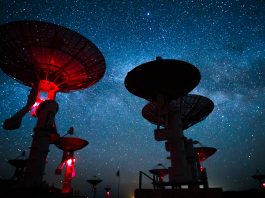An international team of astronomers have detected a pulsating rhythm among distant young stars which will help scientists understand more about the Sun and the workings of stars.
Data from NASA’s Transiting Exoplanet Survey Satellite (TESS) has allowed an international team of astronomers to identify a rhythm of activity among a class of stellar objects.
Space’s rhythm section
The team of astronomers conducted their study on the delta Scuti stars. They are around 1.5 to 2.5 times larger than our Sun, and although scientists have previously identified many pulsations when studying this class of stellar objects, they have not been able to determine any specific patterns or rhythms.
Prior to this study astronomers have been able to detect the internal oscillations of stars using a branch of science known as asteroseismology. This method reveals their structure, by studying stellar pulsations using careful and precise measurements of changes in light output.
Asteroseismology allows scientists to understand the workings of distant stellar objects, but can also help us understand how our own Sun produces sunspots, flares and deep structural movements, and using this approach the researchers found 60 delta Scuti stars whose pulsations had a rhythm that made sense.
Revealing the interior of stars
In a new paper published in Nature, Keele University’s Dr Barry Smalley discusses how identifying patterns like this can reveal significant details about the interiors of stellar objects.
Smalley said: “The precision of the measurements from TESS has allowed us to reduce the background noise. We can now clearly hear the ‘song’ being played by the stars. The regular patterns of frequencies found in this study are an important contribution to our understating of the interior of the stars.”
According to Smalley’s research paper: ‘asteroseismology probes the internal structures of stars by using their natural pulsation frequencies. It relies on identifying sequences of pulsation modes that can be compared with theoretical models, which has been done successfully for many classes of pulsators, including low-mass solar-type stars, red giants, high-mass stars and white dwarfs.’









